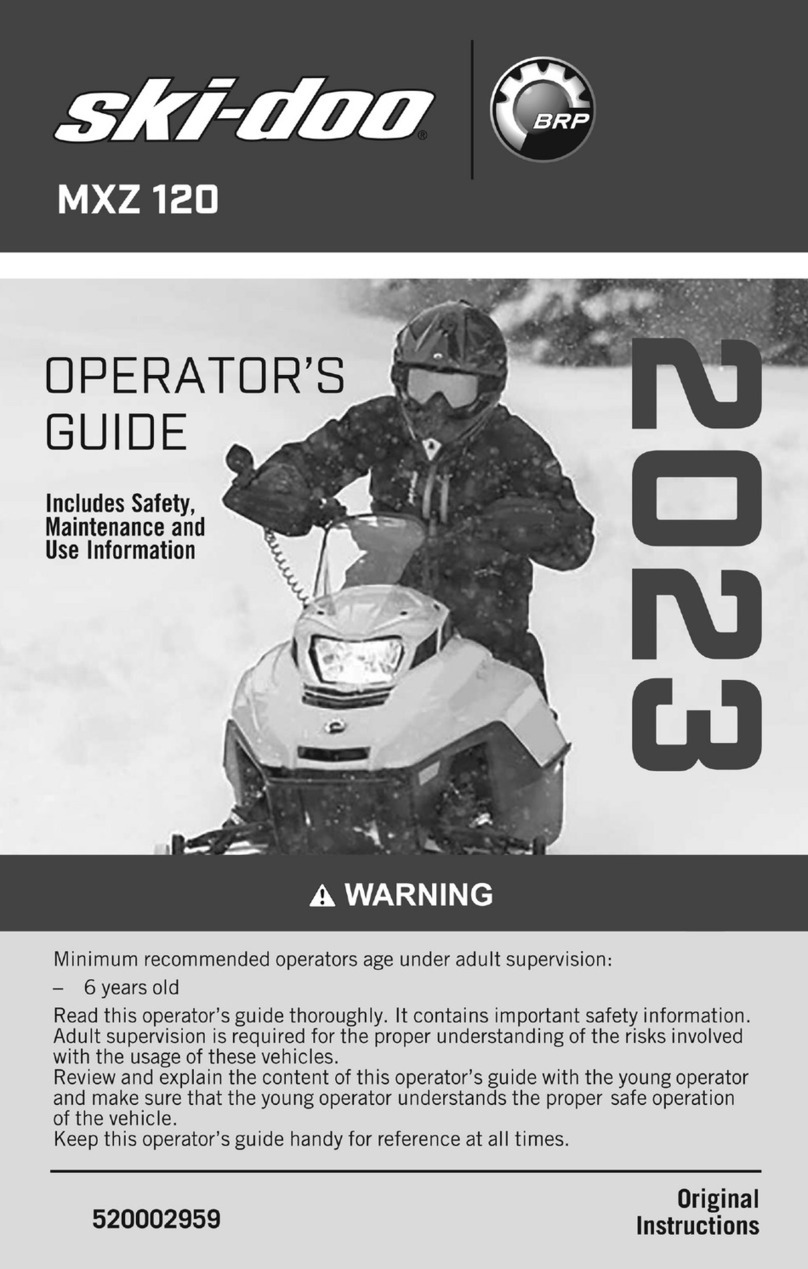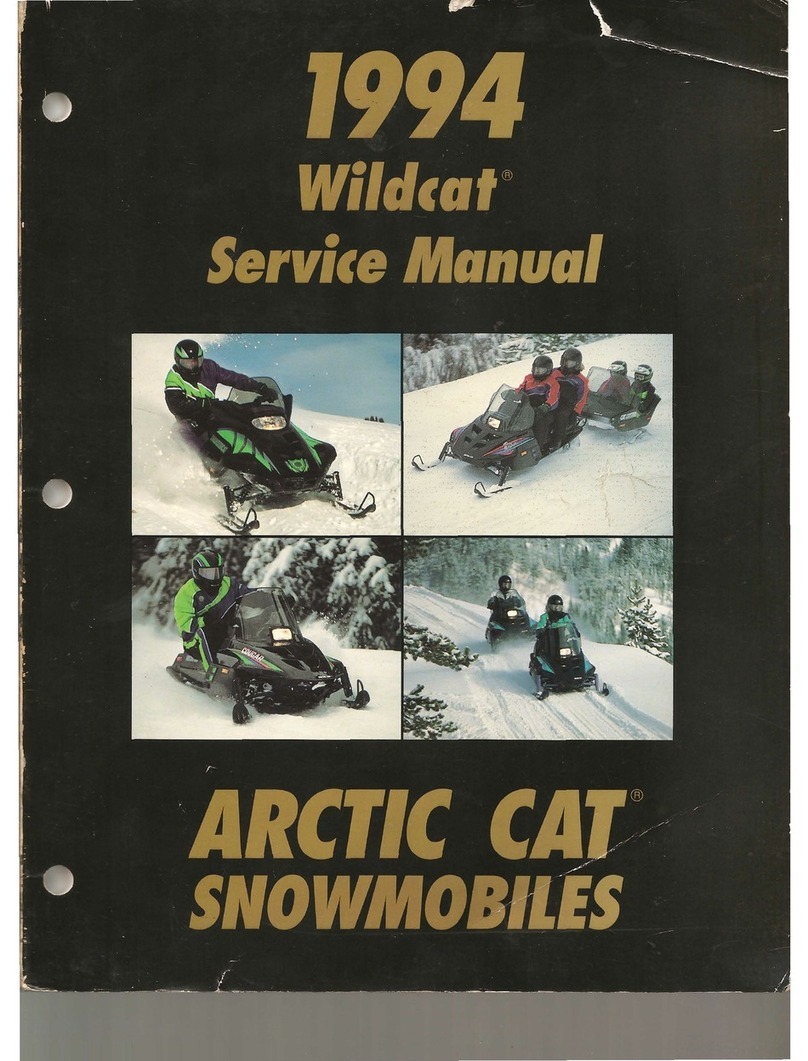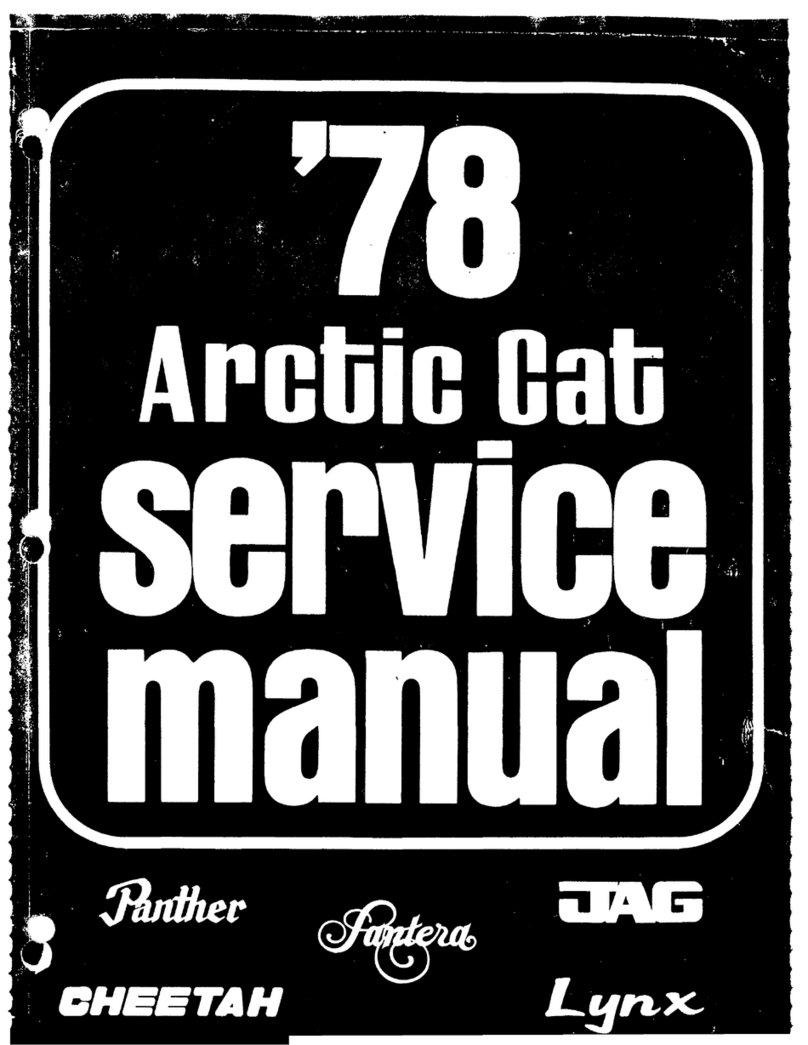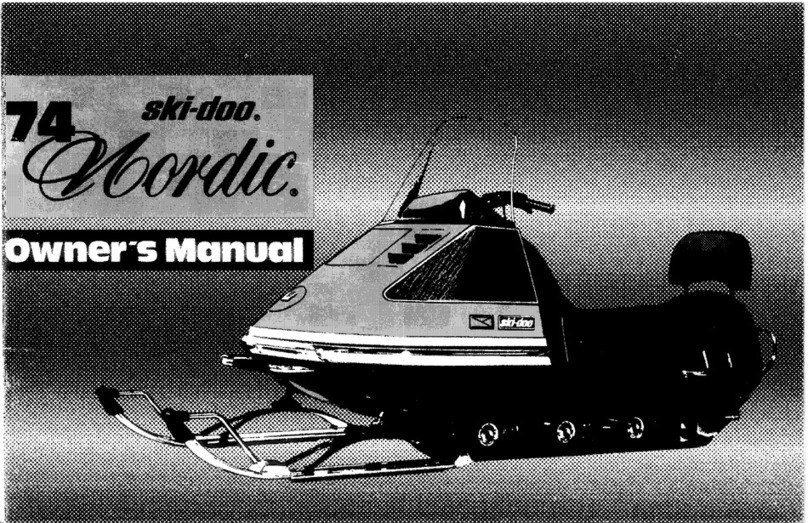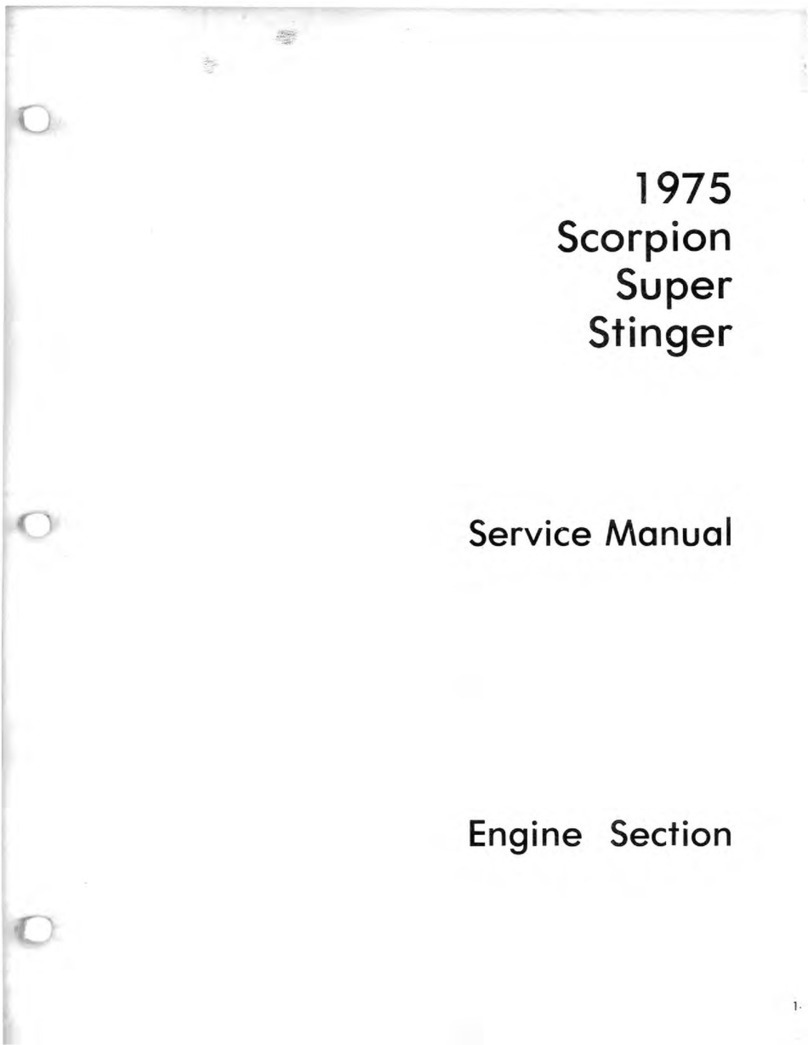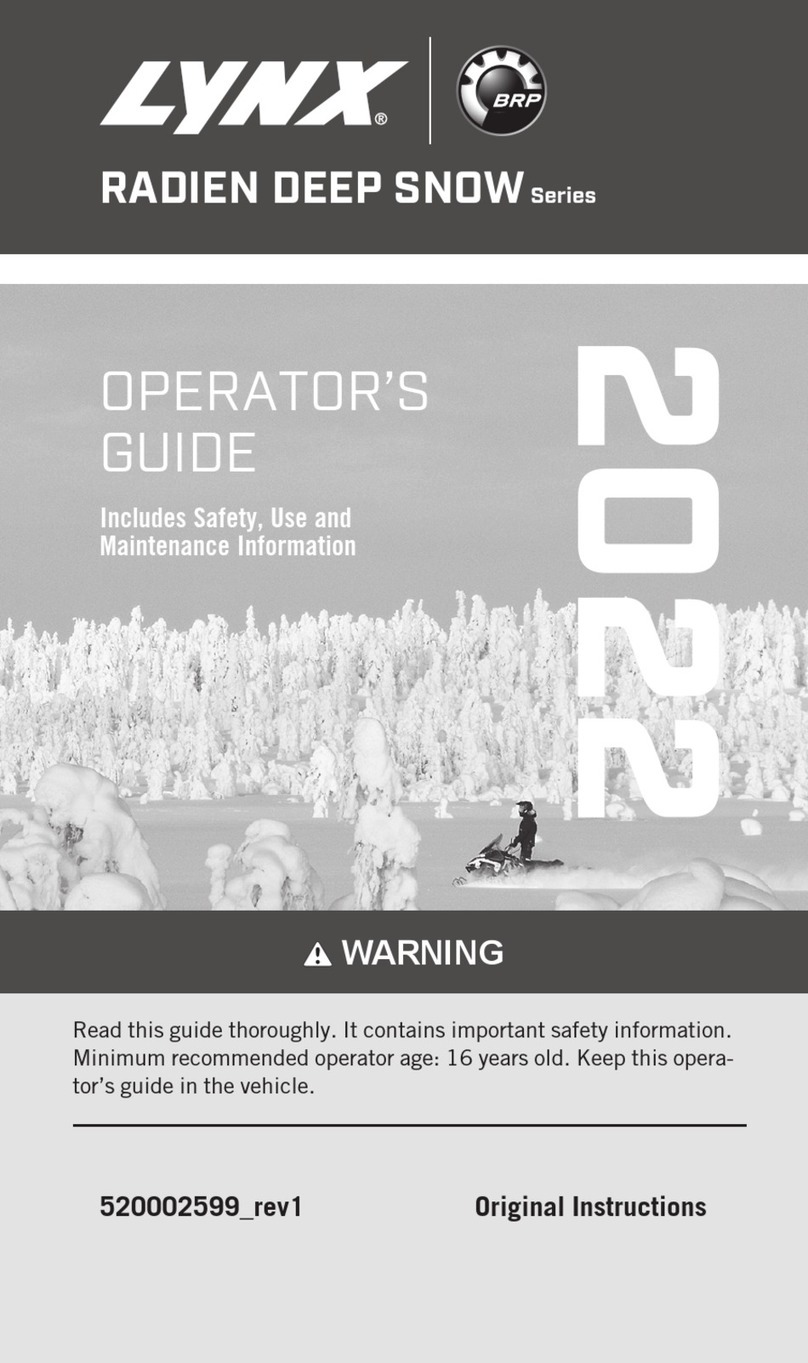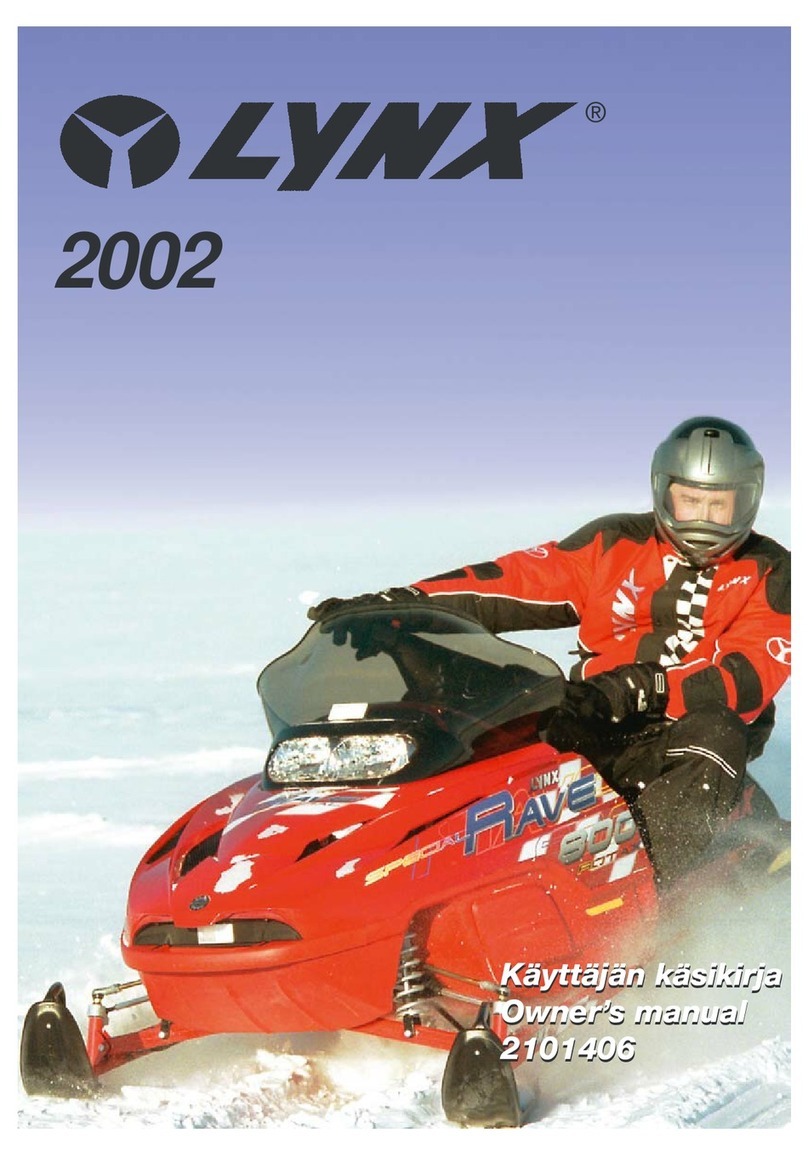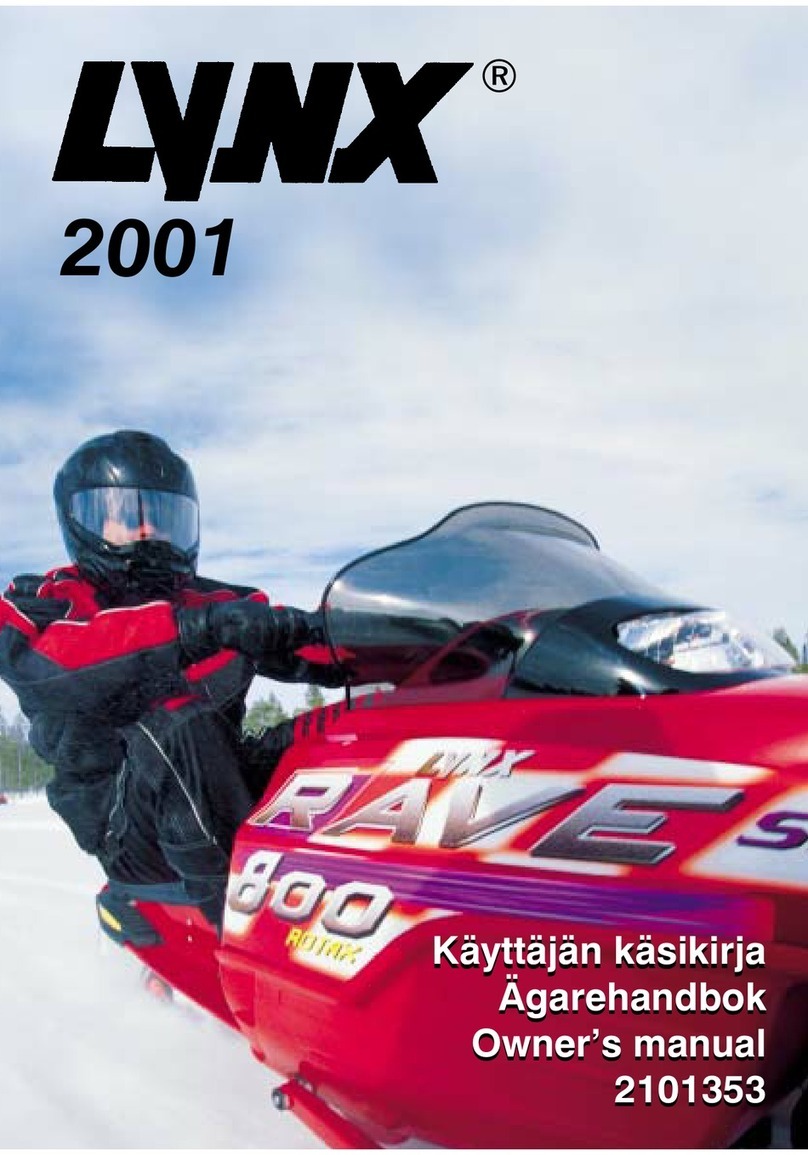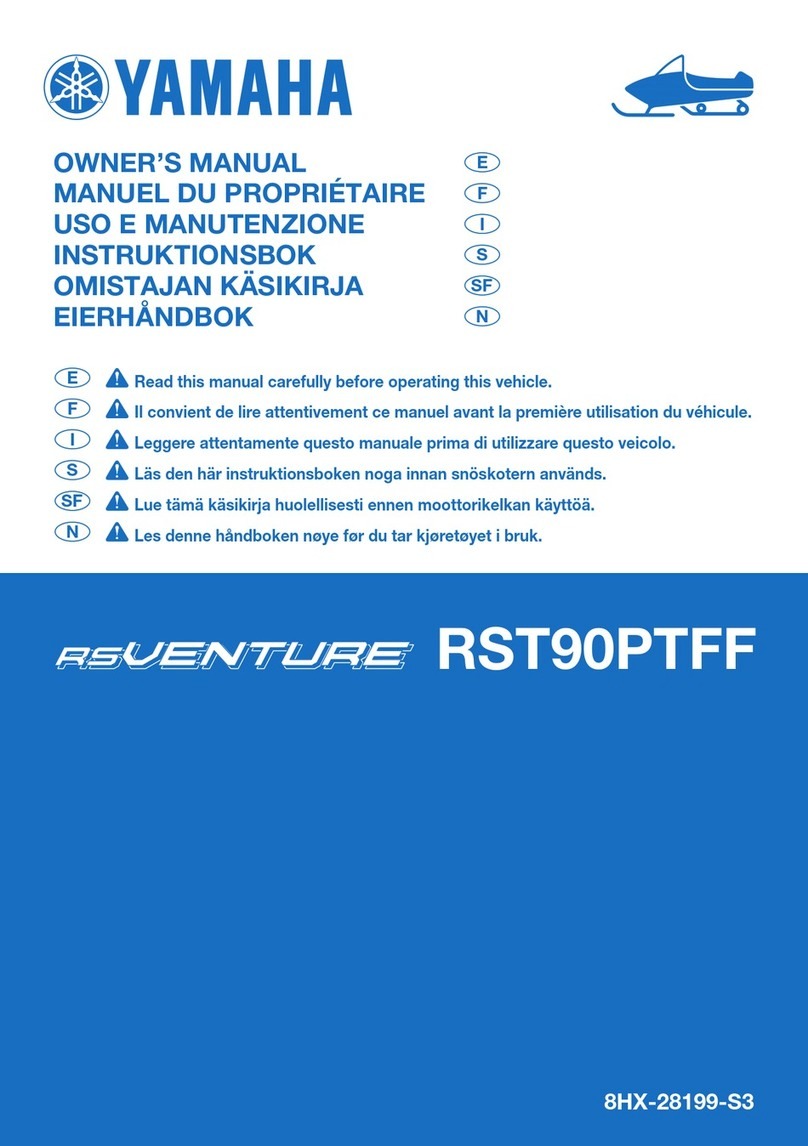
FOREWORD
We highly recommend that you take
a safety riding course. Please check
with your dealer or local authorities for
availability in your area.
Failure to follow the warnings con-
tained in this Operator's Guide can
result in SERIOUS INJURY or DEATH.
The proper functioning of a snowmo-
bile depends in part on the surface on
which it is driven.
Drivingonveryhardorsnow-freesur-
faces compromises the cooling of
the engine and the lubrication of rear
suspension components. Avoid pro-
longed driving on such surfaces.
Safety Messages
The types of safety messages, what
they look like and how they are used in
this guide are explained as follows:
The safety alert symbol indicates
a potential injury hazard.
WARNING
Indicates a potential hazard, if not
avoided, could result in serious in-
jury or death.
CAUTION Indicates a hazard
situation which, if not avoided,
could result in minor or moderate
injury.
NOTICE Indicates an instruction
which, if not followed, could se-
verely damage vehicle components
or other property.
About this Operator's
Guide
This Operator's Guide has been pre-
pared to acquaint the owner/operator
and passenger with this snowmobile
and its various controls, safe riding and
maintenance instructions.
The following terminology in regards to
operator, passenger and vehicle con-
figuration is used as follows through-
out this guide:
–Operator: refers to the person be-
ing behind the controls and driving
the snowmobile.
–Passenger: refers to a person sit-
ting behind the operator.
–1-UP: refers to a model designed for
an operator only.
–2-UP: refers to a model designed to
accommodate one passenger.
Keep this Operator's Guide in the vehi-
cle as you can refer to it for things such
as maintenance, troubleshooting and
instructing others.
Note that this guide is available in sev-
eral languages. In the event of any dis-
crepancy, the English version shall pre-
vail.
Ifyouwanttoviewand/orprintan
extra copy of your Operator's Guide,
simply visit the following website
www.operatorsguides.brp.com.
The informations contained in this doc-
ument are correct at the time of publi-
cation. BRP, however, maintains a pol-
icy of continuous improvement of its
products without imposing upon itself
any obligation to install them on prod-
ucts previously manufactured. Due
to late changes, some differences be-
tween the manufactured product and
the descriptions and/or specifications
in this guide may occur. BRP reserves
the right at any time to discontinue or
change specifications, designs, fea-
tures, models or equipment without
incurring any obligation upon itself.
This Operator's Guide should remain
with the vehicle when it's sold.
2_______________

